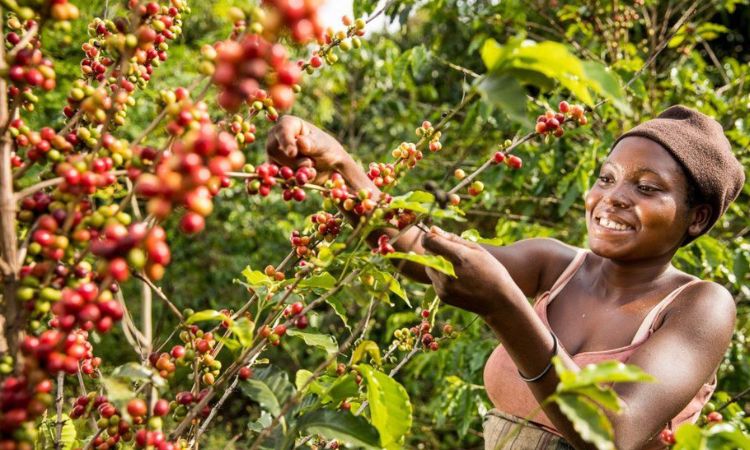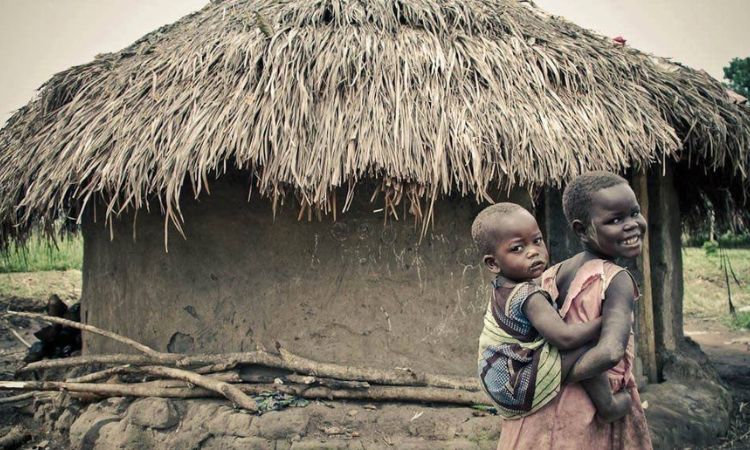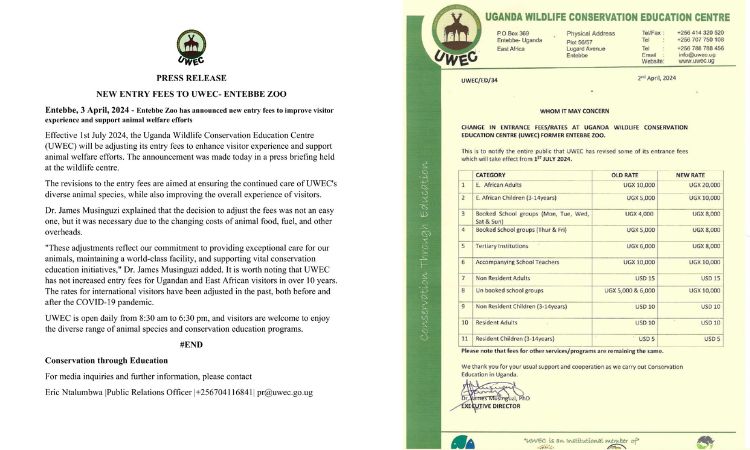Is Uganda a Rich or Poor Country? Economic Facts 2025
Is Uganda a rich or poor country: Explore whether Uganda is a rich or poor country. Learn about Uganda’s economy, natural resources, GDP growth, poverty rate, and development prospects in 2025.
Many wonder: Is Uganda a rich or poor country? Classified as a low-income developing nation, Uganda boasts one of Africa’s fastest-growing economies, abundant natural resources, fertile lands, and a youthful population.
In 2025, with GDP projected at USD 53-55 billion and growth at 6-7%, Uganda blends challenges like poverty with immense potential in oil, tourism, and agriculture. This comprehensive guide dives into Uganda economy 2025 facts, comparing it to neighbors and highlighting investment opportunities.
Uganda’s Economic Overview
Uganda’s economy in 2025 remains resilient, transitioning from low-income to lower-middle-income aspirations under Vision 2040. Nominal GDP stands around USD 53.65 billion (2024 base, growing), with projections to USD 55+ billion. GDP per capita hovers at USD 1,200-1,210, up from USD 1,002 in 2023.
Key sectors: Agriculture (24% GDP, 70% employment), services (tourism, finance), manufacturing, and emerging oil/mining. Currency: Ugandan Shilling (UGX). Classified as low-income by World Bank, but Uganda GDP growth averages 6.1-6.3% in FY2024/25, driven by coffee exports, infrastructure, and oil prep. Is Uganda developing or developed? Firmly developing, with fast urbanization and digital innovation.
Why Uganda is Considered Poor
Despite progress, Uganda faces hurdles explaining why it’s seen as poor. National poverty rate hit 20.3% in 2023/24 (UBOS), down from higher pre-COVID levels, but multidimensional poverty affects 57% when including health/education deprivations.
Challenges:
- High poverty: 8.3 million below the line; Karamoja at 74%, Kampala 1.1%.
- Youth unemployment: Over 40% jobless among under-30s (77% of population).
- Agriculture dependence: Subsistence farming vulnerable to climate shocks.
- Infrastructure gaps: Limited electricity/roads in rural areas.
- Inequality: Gini coefficient signals uneven wealth distribution in Uganda.
Uganda poverty rate in rural north/east lags urban south, fueling “Is Uganda a poor country in Africa?” queries.
Why Uganda is Also Rich: Natural Wealth
Uganda’s riches shine in resources. Proven oil: 6.5 billion barrels STOIIP, 1.4 billion recoverable in Albertine Graben. Minerals: Gold, copper, cobalt, iron—vital for green tech.
Agriculture: “Pearl of Africa” with fertile soils producing coffee (top export), tea, bananas, maize. Lake Victoria/River Nile provide freshwater/fish. Tourism: Mountain gorillas in Bwindi, 10 national parks draw safaris.
Young workforce and Uganda natural resources position it as resource-rich, countering poverty narratives.

Economic Growth Trends
Uganda economic growth hits 6.1-6.8% in 2025, accelerating post-oil (7%+ medium-term). Drivers: Oil pipelines, dams, roads; digital tech; stable policies by Bank of Uganda.
|
Year |
GDP Growth (%) |
Key Driver |
|
2024 |
6.0 |
Agriculture recovery |
|
2025 |
6.2-7.0 |
Oil investments, exports |
Uganda GDP growth outpaces many peers, signaling shift from poor to prosperous.
Poverty Rate and Income Inequality
Uganda poverty rate: 20.3% monetary (2023/24), projected ~18-19% by end-2025 via programs. Rural poverty dominates; wealth concentrates in Kampala/Entebbe.
Inequality: Urban-rural gap stark. Standard of living improves—affordable cost of living (~USD 500/month urban)—but healthcare/education access varies.
Poverty Reduction Efforts
Uganda tackles poverty head-on with targeted programs:
- Parish Development Model (PDM): USD 30 million/parish for local enterprises, empowering communities.
- Youth Livelihood Programme (YLP): Grants/loans for youth startups, creating jobs.
- Operation Wealth Creation (OWC): Seeds/tools for farmers, boosting agriculture.
- Emyooga: Microfinance for saccos, focusing women/youth.
- Women empowerment: Skilling initiatives, affirmative finance.
These Uganda poverty reduction programs cut rates from 30%+ pre-2020, aligning with SDG goals.
Urban Development and Infrastructure
Kampala booms: Entebbe Expressway, skyscrapers, industrial parks. Energy: Karuma/Isimba dams; solar push. Digital: Fiber optics, mobile money (80% adults). Uganda urbanization attracts expats, raising living standards.
Education, Technology & Innovation
Literacy: 76%. Universities (Makerere) expand. Tech: SafeBoda, Xente fintechs. Government ICT hubs foster innovation in Uganda, prepping youth for global jobs.
Uganda’s Oil and Mining Potential
First oil: 2025-26 via Tilenga/Kingfisher (190,000 bpd peak). EACOP pipeline to Tanzania. Reserves: 1.4 billion barrels recoverable. Mining: Cobalt/gold exports rise. Uganda oil reserves transform economy, adding billions in revenue.
Foreign Investment and Trade
Investors: China (infrastructure), EU/UAE (energy), Kenya (trade). Exports: Coffee, gold, fish. SEZs lure manufacturing. Uganda investment opportunities abound in agro-processing, renewables.
Quality of Life and Cost of Living
Affordable: Rent USD 200-400 Kampala; meals USD 2-5. Healthcare improves via insurance. Growing middle class enjoys malls, safaris. Life in Uganda: Vibrant, safe urban; community rural.

Comparison with Other African Economies
|
Country |
GDP (B USD) |
GDP/Capita (USD) |
Status |
|
Kenya |
110 |
2,300 |
Lower-middle |
|
Uganda |
54 |
1,210 |
Low-income, growing |
|
Tanzania |
85 |
1,500 |
Lower-middle |
|
Rwanda |
14 |
1,000 |
Developing |
Uganda vs Kenya economy: Kenya ahead in per capita, but Uganda faster growth.
Government Efforts and Future Outlook
Vision 2040: Middle-income by 2040 via industrialization. NDP IV (2025 start): Jobs, exports. Oil revenues fund health/education. Uganda development plan optimistic—10%+ growth post-oil.
FAQ
Is Uganda a rich or poor country in 2025?
Developing with rich resources; low per capita but high potential.
What makes Uganda a developing country?
Agriculture reliance, infrastructure needs, despite growth.
Why is Uganda considered a low-income country?
GDP per capita ~USD 1,200; poverty affects millions.
How rich is Uganda in natural resources?
6.5B barrels oil, vast minerals, fertile lands.
What is Uganda doing to become middle-income?
Oil monetization, poverty programs, infrastructure.
How much is Uganda’s GDP in 2025?
~USD 55 billion, growing 6-7%.
Conclusion
So, is Uganda a rich or poor country? Perspective matters. Challenges like 20% poverty and inequality persist, but riches in oil (1.4B barrels recoverable), agriculture, and youth drive 6%+ growth.
With PDM, EACOP, and Vision 2040, Uganda’s 2025 outlook is prosperous. Investors/travelers: Explore Uganda tourism economy and opportunities—Africa’s rising pearl awaits.



